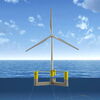Processing Your Payment
Please do not leave this page until complete. This can take a few moments.
- News
-
Editions
-
- Lists
-
Viewpoints
-
Our Events
-
Event Info
- Women's Leadership Forum 2025
- On the Road with Mainebiz in Bethel
- Health Care Forum 2025
- On The Road with Mainebiz in Greenville
- On The Road with Mainebiz in Waterville
- Small Business Forum 2025
- Outstanding Women in Business Reception 2025
- On The Road with Mainebiz in Bath
- 60 Ideas in 60 Minutes Portland 2025
- 40 Under 40 Awards Reception 2025
- On The Road with Mainebiz in Lewiston / Auburn
- 60 Ideas in 60 Minutes Bangor 2025
Award Honorees
- 2025 Business Leaders of the Year
- 2024 Women to Watch Honorees
- 2024 Business Leaders of the Year
- 2023 NextUp: 40 Under 40 Honorees
- 2023 Women to Watch Honorees
- 2023 Business Leaders of the Year
- 2022 NextUp: 40 Under 40 Honorees
- 2022 Women to Watch Honorees
- 2022 Business Leaders of the Year
-
-
Calendar
-
Biz Marketplace
- News
- Editions
- Lists
- Viewpoints
-
Our Events
Event Info
- View all Events
- Women's Leadership Forum 2025
- On the Road with Mainebiz in Bethel
- Health Care Forum 2025
- On The Road with Mainebiz in Greenville
- On The Road with Mainebiz in Waterville
- + More
Award Honorees
- 2025 Business Leaders of the Year
- 2024 Women to Watch Honorees
- 2024 Business Leaders of the Year
- 2023 NextUp: 40 Under 40 Honorees
- 2023 Women to Watch Honorees
- 2023 Business Leaders of the Year
- + More
- 2022 NextUp: 40 Under 40 Honorees
- 2022 Women to Watch Honorees
- 2022 Business Leaders of the Year
- Nomination Forms
- Calendar
- Biz Marketplace
UMaine consortium lands $3 million R&D grant to continue offshore wind project
 Photo / James McCarthy
Habib Dagher, director of UMaine's Advanced Structures and Composites Center, declares on Friday “mission accomplished” for the VolturnUS prototype wind turbine deployed off the shores of Castine.
Photo / James McCarthy
Habib Dagher, director of UMaine's Advanced Structures and Composites Center, declares on Friday “mission accomplished” for the VolturnUS prototype wind turbine deployed off the shores of Castine.
CASTINE — With a brisk ocean breeze twirling the blades of the University of Maine’s 65-foot VolturnUS floating wind turbine behind him, David Danielson of the federal Department of Energy had the perfect visual backdrop to highlight the message he came to Maine to deliver.
“We are not done yet,” he told the boatload of more than 30 guests invited by UMaine to celebrate on Friday VolturnUS’s first year of generating power in the waters off Dyce’s Head in Castine. “Although I did not bring an Ed McMahon-size check, I’m very happy to announce the launch of the next phase of this incredibly productive partnership with UMaine and its team here to take VolturnUS to the next level. We are announcing $3 million of a research and development investment to finish the design, which will put this technology in the position where it will be ready to go to commercialization.”
Danielson, the DOE’s assistant secretary for energy efficiency and renewable energy, offered unequivocal praise for the VolturnUS project, calling it an “amazing, pioneering project, the first of its kind in the country — the first grid-connect offshore project in this nation” … adding that as a former venture capitalist he would have been delighted to have achieved those results on even a $12 million investment.
“Behind me is just the beginning of our partnership,” he said. “We have invested almost $4 million into the next phase of this partnership to take this technology to the full scale, eight times bigger than this. It’s going to take this truly commercial technology to scale all across the country and all across the world.”
Habib Dagher, director of UMaine’s Advanced Structures and Composites Center, presented a quick overview of the VolturnUS floating turbine, which was built by Cianbro and UMaine and features a concrete hull and a tower made of composites. Deployed off Castine in June 2013, Dagher characterized the prototype floating turbine as an “experiment” designed to test the viability of its design in a location providing wave and wind conditions that would simulate, at 1:8 scale, what a full-size floating wind turbine would encounter further offshore in the Gulf of Maine.
“VolturnUS is a floating laboratory,” he said, noting that it’s equipped with more than 50 sensors onboard to collect data on wind speeds, wave conditions and the turbine’s performance across the full gamut of weather conditions. “The good news is that it did what it was supposed to do.”
Some highlights of VolturnUS’s first year:
• It successfully weathered 18 severe storms equivalent to 50-year storms and one that was equivalent to a 500-year storm.
• The maximum acceleration measured for those storms matched numerical predications.
• The maximum tower inclination in all of those storms was less than 7 degrees, which also matched predictions.
“Today we can declare VolturnUS’s mission accomplished,” Dagher said.
In a brief interview at Castine’s waterfront upon the return of MMA’s 70-foot training vessel Susan J. Clark, Jake Ward, UMaine's vice president for innovation and economic development, said the DOE’s $3 million grant coupled with UMaine’s $800,000 funding will enable the DeepCwind Consortium to spend the next year completing the R&D work that’s needed to be ready to build and deploy a full-scale floating wind turbine in the 4MW to 6MW range.
“It should take us to the point where you could basically go out to bid on a full-size turbine,” he said, adding that this would put UMaine on par a year from now with the three projects that were selected earlier this year to receive $46.7 million apiece in additional DOE funding. As the fourth-ranking proposal, he said, UMaine would be in line to step in for the DOE’s full grant if one of the other projects folds or if Congress approves additional funding for offshore wind research.
“However, if that doesn’t materialize, we will still have a design that can be developed in the Gulf of Maine, or another location,” he said. “The key to commercialization is to have the opportunity to prove that the innovations we’ve proposed and demonstrated with VolturnUS can be built up to full scale and that indeed they can achieve the economic efficiencies that we’ve projected.”
Ward said the consortium remains fully supportive of UMaine’s offshore wind project, largely because of the 4,000 gigawatts of offshore wind potential within 50 miles of the U.S. coasts, including 156 GW in the Gulf of Maine. That represents a huge market potential, he said, and the consortium is doing everything it can to make sure Maine companies will be able to capitalize on it.
Danielson credited UMaine with being at the forefront of the nation’s efforts to build clean renewable energy tapping offshore wind, saying: “We’ve got plenty of energy out here and we have just the innovation here at the University of Maine and all across the nation that we need to tap into it and take technology like this to the next level, so we can harness this power for the nation.”
Read more
UMaine still committed to offshore wind project
Wind project's costs may have led to grant loss
Nixed Maine wind project a lost opportunity, energy groups say
Bristol voters deny UMaine wind project grid link
SunEdison finalizes First Wind buyout
Head of University of Maine composite research center to be honored by White House














Comments